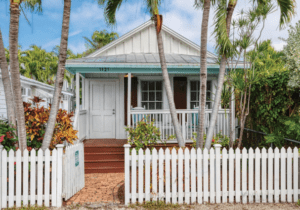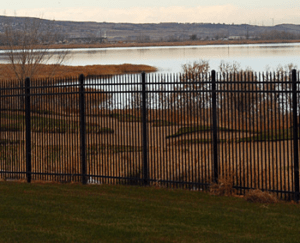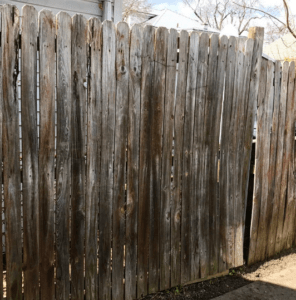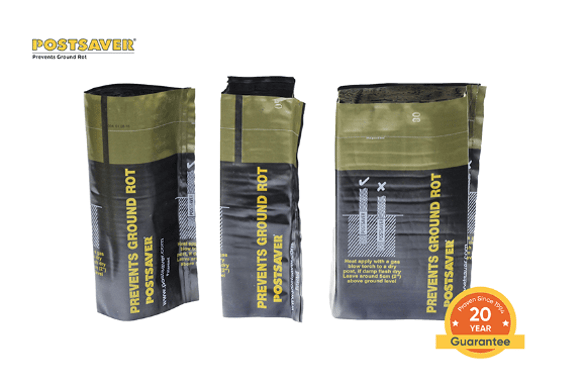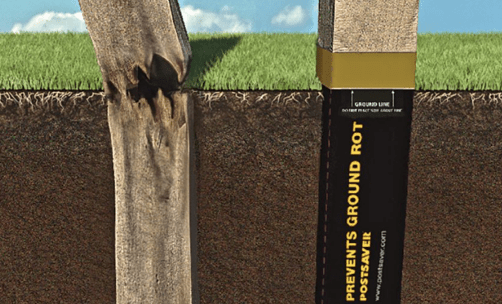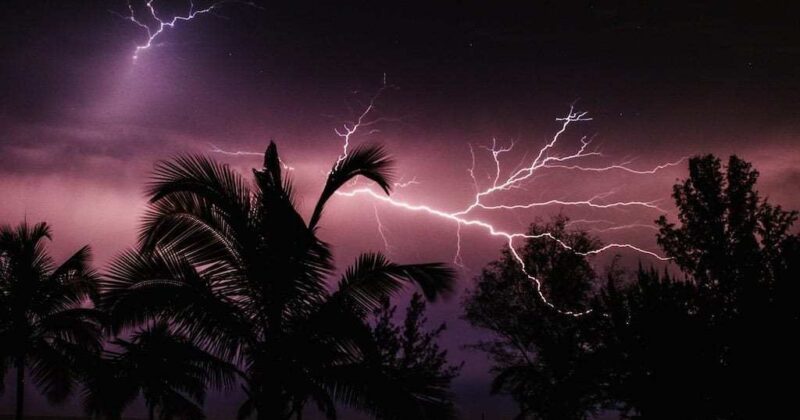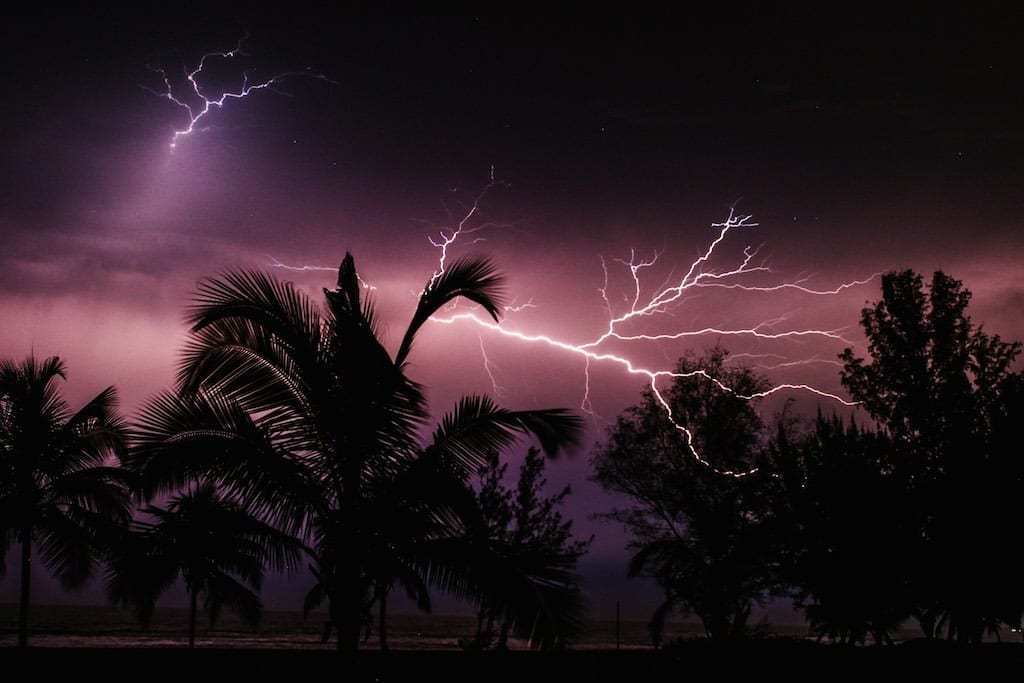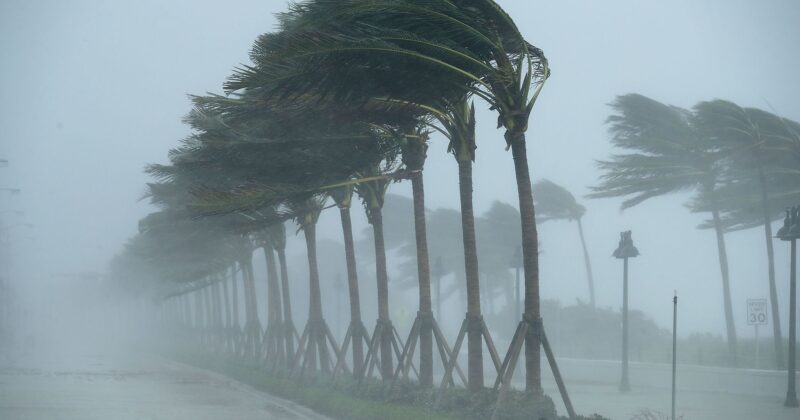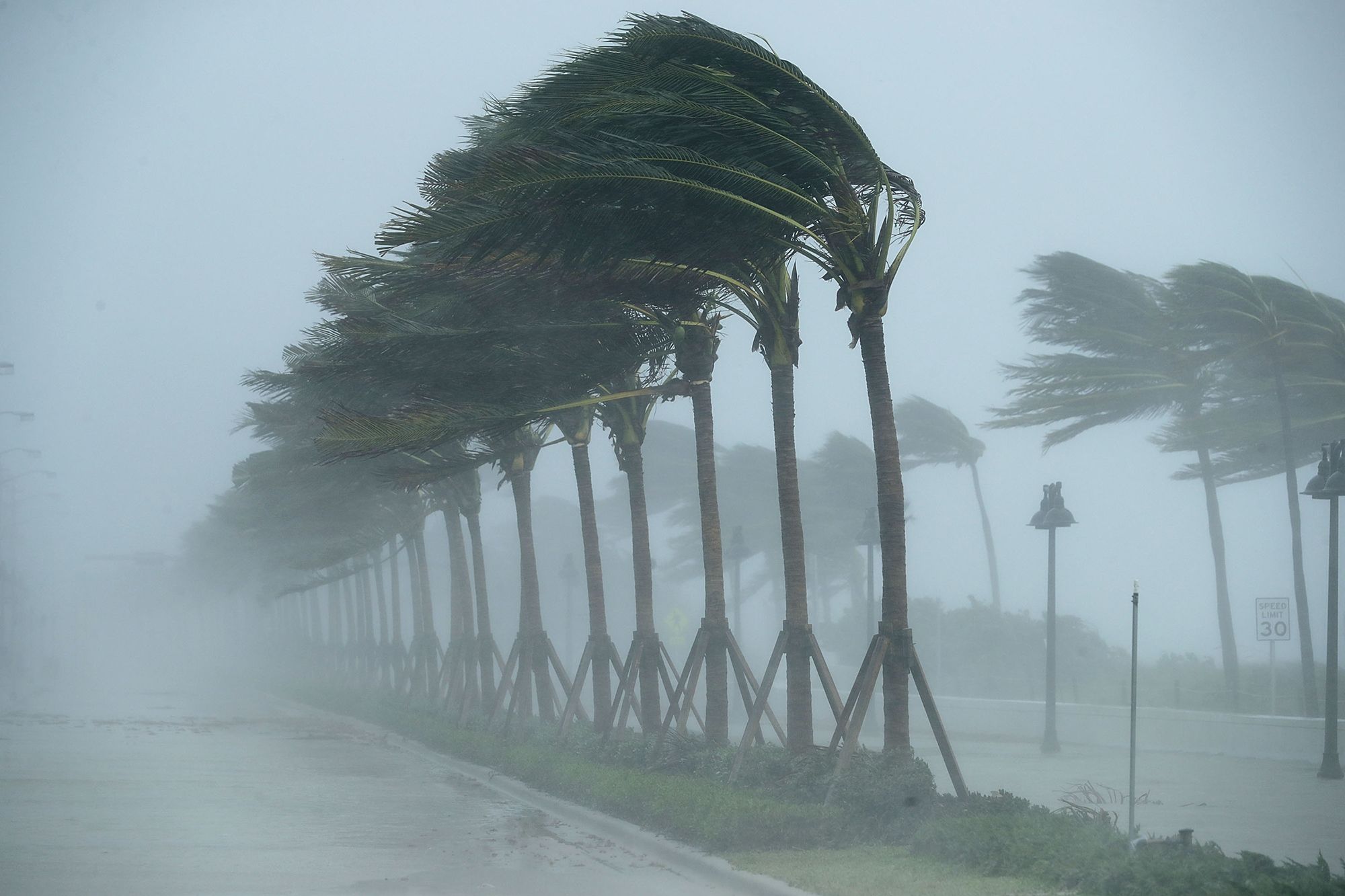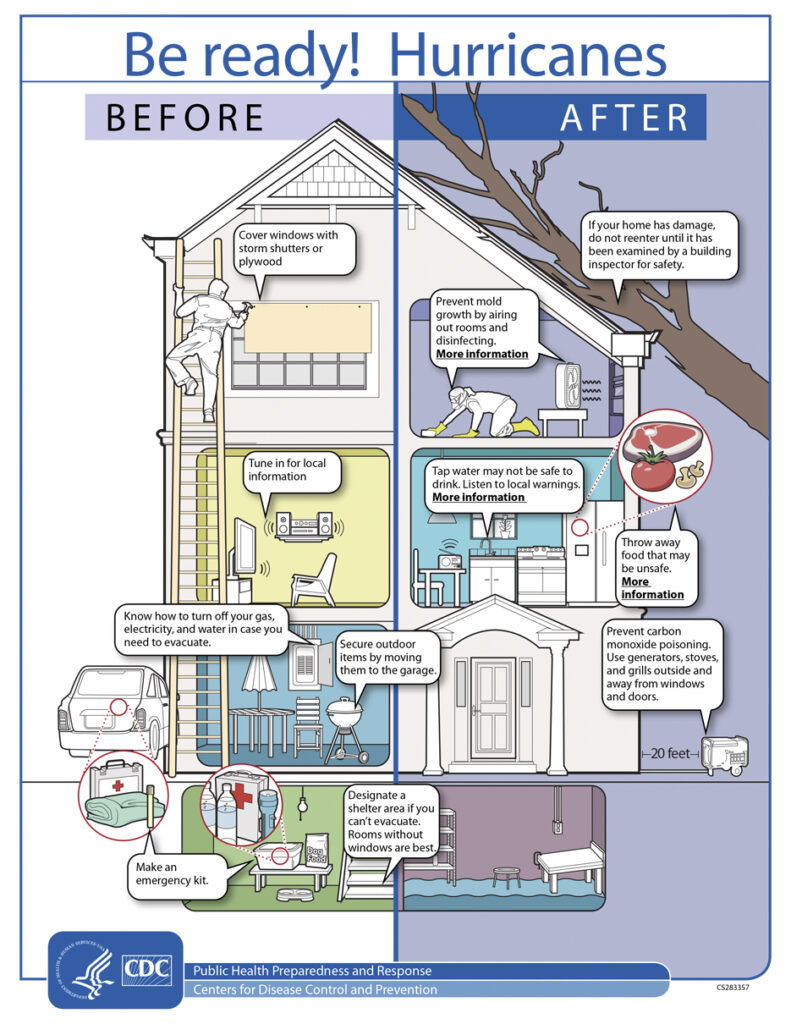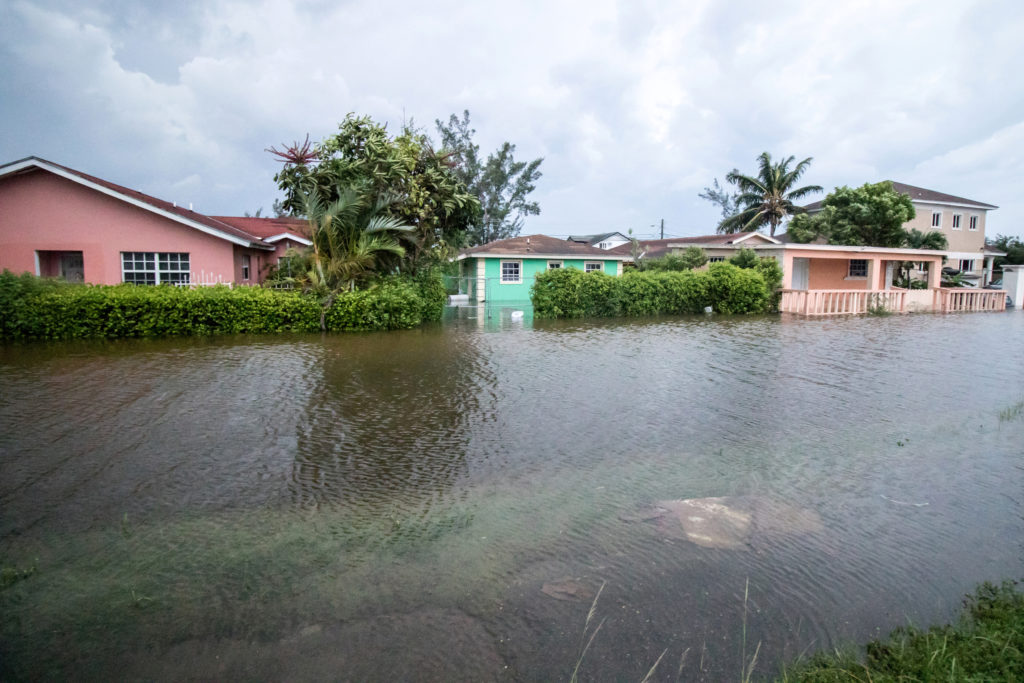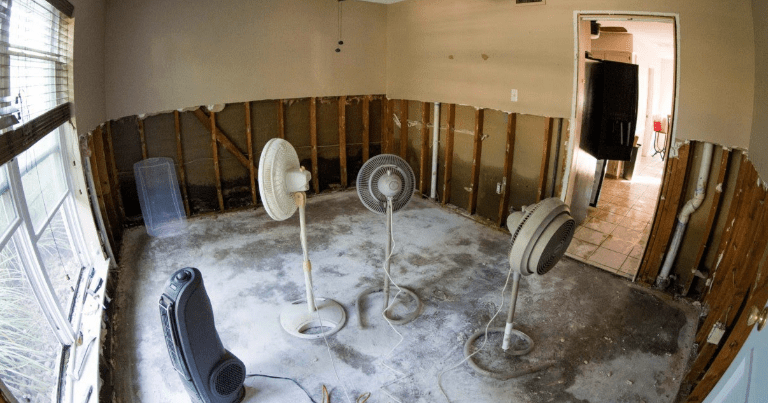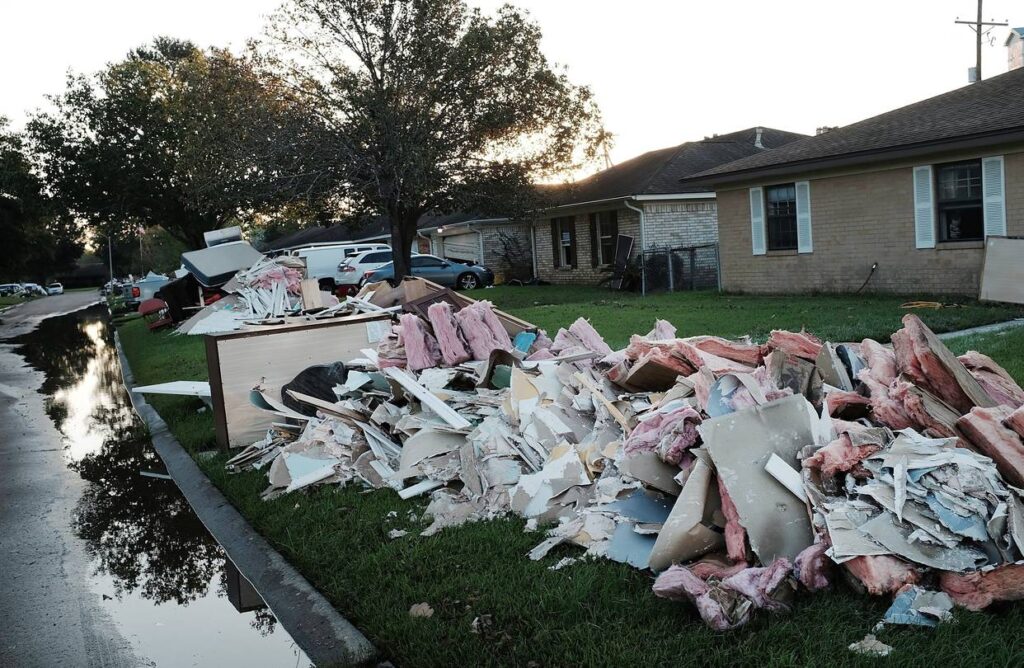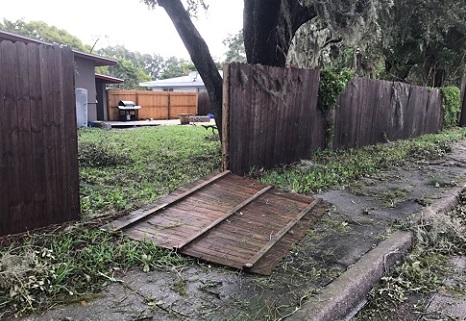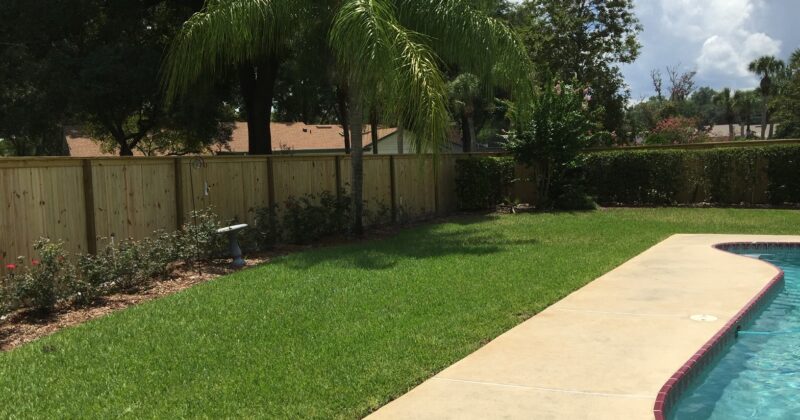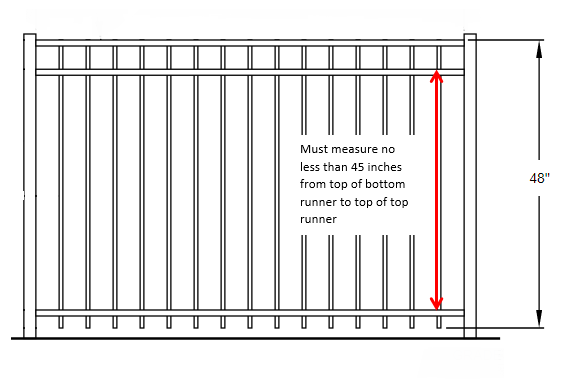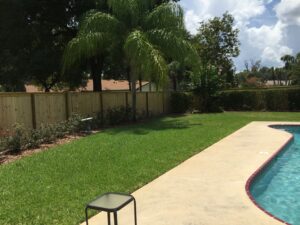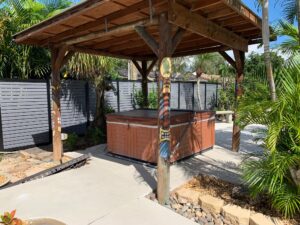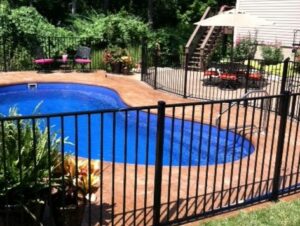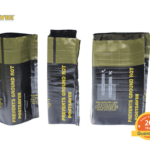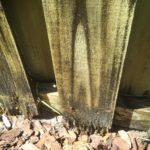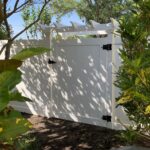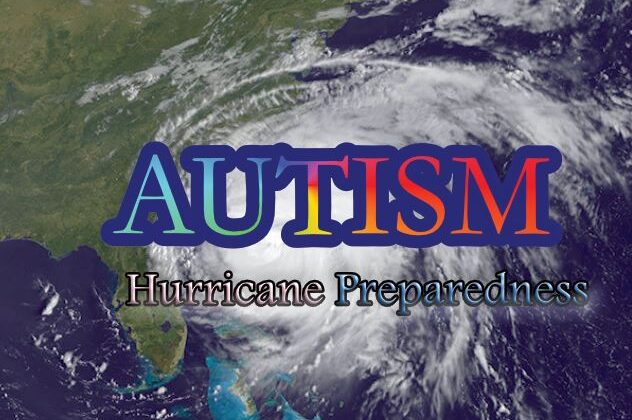QUESTION: I’ve heard both sides of the story for using cement on fence posts. How do I know which is correct? Cement with an upward slope to hold the post or no cement due to the rotting of the post?
ANSWER: Concrete or no Concrete is a hot topic. It doesn’t matter if the fence is in California, North Dakota, Texss, or New York, their answers revolved around three different factors: (1) Geographical Location, (2) Environmental Conditions, and (3) Leverage Ratios versus External Force.
Based on these three factors, the answer should be simple; but it is not. It is as complicated as the Shakespeare quote: “To be or not to be…” That answer is complex and possesses endless meanings, just like the use of concrete.
For example, let us examine the reference in the question, “Cement with an upward slope to hold the post.” On the surface, it seems like the company’s response makes sense. One would think, It could prevent the post from being pushed up or down or left or right. The realistic side is the upward sloping (Doming) of the concrete is a common practice in cold weather climates that experience sustained hard freezes. It is this practice of upward sloping or doming of concrete that prevents the permafrost from pushing the post upwards, ultimately disturbing the registry of the fence.
But permafrost does not exist in Florida. The upward sloping of concrete on a post is nothing more than a marketing ploy or way to get a customer to spend more. We have seen this time and time again, and believe me, Florida fence companies can get creative. My personal favorite was the $5.00 cement collar which is very similar to upward sloping. It is less than one pound of wet mix concrete spread in a circular manner around the base of a post. It’s a big moneymaker if you understand (1) 60 lbs bag of concrete only costs $3.45 from Lowe’s.
Now let us address the second part of your question: Concrete and posts rotting. At the AFA National Convention, I heard a lot of theories as to why posts with concrete rot, but only one made the most sense. “In my state, the problem is farmers think they are fencers and fencers think they are farmers,” said the owner of a third-generation fence company from Upstate New York. It sounded silly as I listened, but then he got technical. I soon realized he had a point, a similar point that Custom Fence Orlando and Paramount Fencing have expressed for 14 years. Everyone in Florida knows how to install a fence, they just don’t understand what they are installing. Moreover, it is not the concrete that rots the post, it is the fence company’s lack of knowledge. So let’s get technical.
WHY DO WE RECOMMEND NO CONCRETE?
This is Florida. We’re in the swampy South- not the Midwest, not the Pacific Coast, not New England. We receive about 53.19 inches of annual precipitation a year. The majority of that precipitation occurs in a six-month span, so the question becomes where does all that rain go? The answer is it seeps downward towards the water table, which creates a normal groundwater level, just below the land surface. Depending on the geological composition of an individual’s property such as sugar sand, Florida Pan Dirt, clay, or limestone–the normal underground water level can be found within 12 inches of the surface during the rainy season and 6 feet in the dry season.
Understand, wood is no different than a sponge. If one end of a sponge is placed in water, it will eventually suck up the water saturating it whole. Unlike the sponge, water cannot be easily removed by simply squeezing or ringing the lumber out. In order to dry, wood needs 30 days of complete and aired-like conditions. Neither occurs when a post is buried in the ground and surrounded by concrete. Dirt is a natural absorbent and will become the posts best hope. All concrete does is trap the residual moisture that was soaked up and creates a breeding ground for fungal decay which creates living organisms called rot.
Rot is a hungry/hangry living organism. It exists and feasts on a wood posts in a zone approximately 4-5″ above ground level and 7- 8 inches just below ground level. Pressure-treated or not; fungal decay will eventually win because all it needs is a food source, moisture, oxygen, and the perfect temperature.
The purpose of pressure treating is to make the lumber rot-resistant, not water-resistant. As a result, pressure-treated lumber will still absorb and shed moisture which leads to expanding and contracting of the post. In a nutshell, the lumber will twist, crack, bend, cup, and ultimately destroy itself. It not a question of if, it’s a question of when.
So how do you limit fungal decay and living rot? It’s simple science that has been studied by major universities such University of Florida IFAS and organizations such as the American Society For Microbiology. Fungal decay is not a new topic. Science can now map the DNA of different species of fungal rot. As earlier discussed, rot is a living breathing organism that needs three key ingredients: moisture, oxygen, and the perfect temperature. So if you want to minimize the rotting of wood posts in the State of Florida, the answer is simple. Protect the post 4 inches above the grade and 10 inches below the grade: A.K.A “the hot zone”. Protecting the hot zone will assist in eliminating one or two of these key factors. Remember, fungal rots needs all three to thrive.
SO HOW DOES CONCRETE HELP ELIMINATE THESE THREE KEY FACTORS?
It does not. Overall, concrete does eliminate direct contact with the soil underground; however, the pressure-treated lumber expands and contracts with moisture. When it does, a 16th-inch gap usually develops between the wood post and the concrete. It sounds like a small and irrelevant gap, but so is dirt and microbes which are the building blocks of fungal rot.
Each week landscapers and weedeaters blow around small particles of dirt and organic matter. Fiber eating fungus develops and eats the decaying matter. Then comes the rain, or the irrigation system. That water finds the gap. The bad stuff seeps downward right into the “Hot Zone”. Mix in some oxygen, the moisture from below, the fact that concrete holds a constant temperature and moisture, and those wood posts are going to prematurely rot. No exceptions. Concrete simply does not protect the “Zone.” The only exception would be to use a post that is pressure treated with UC4B which is meant for use in stagnate water but the pressure-treating only works as long as the chemicals remain. Chances are you would not find UC4B treated post on the shelf at the local lumber yard or home improvement store. All they normally stock is UC4A which is meant for a rapid watershed. UC4A is just cheaper to bring to the market.
SO WHY DO FENCE COMPANIES USE CONCRETE ON WOOD POSTS IN FLORIDA?
It’s not to prevent rot. Most use concrete to create leverage. The main reason is the post length of choice for fence companies is often a 4″ x 4″ x 8′. As a result, the fence post is only two feet in the ground on a six-foot in height wood fence. Hence the use of concrete. What they do not realize is if it is the leverage that they desire, then all they need to do is purchase a longer post. After all, a 4″ x 4″ x 10′ is the same cost as 4″ x 4″ x 8′ and a bag of concrete combined.
SO WHAT DOES CUSTOM FENCE ORLANDO RECOMMEND?
We suggest two approaches. The first approach is simple: do nothing. Let dirt, when it is dry, do what it does best–absorb the moisture from the post. Then let the soil’s thermal property go to work as it absorbs the sun’s heat during the dry season. It will assist in creating irregular temperature within the zone. The only that remains is oxygen exposure. Keep in mind, this approach is still vulnerable should we have a wet and muggy year; but overall the post should last 12-14 years. It is the most cost-effective way for Central Florida homeowners.
The second approach protects the Hot Zone. There are several products on the market that can completely protect this “Zone” against the three key factors which contribute to fungal decay. Simply put, the wood post will no longer be a food source. These products are commonly known as “PostSavers.” They come in all different variations and sizes, but they can get expensive. Our weapon of choice is a post sever sleeve produced by Postsaver Europe Ltd out of England. It is a unique and cost-effective way to accomplish the mission.
Best of all, PostSavers are cost-effective. Overall, the average cost per foot only increases by approximately .43 cents. Considering the PostSaver will extend the life of the post for up to 25 years, that is a small price.
Remember, in the State of Florida we often replace Wood fences every 10-12 years. It’s not because of the runners and pickets. It because the post rots at grade or in the zone. For more details on how Postsavers work visit or Postsaver page or use the link: PostSavers.
[WD_Button id=5864]
